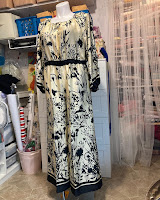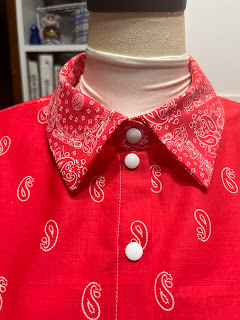Who doesn't love shoes?
I’ve been traveling quite a bit lately. When, I arrived home
from my last trip, I unpacked and realized my past three trips I put my shoes
in plastic store bags! Yikes!
When I first learned to sew, I had plenty handmade shoe bags that I used for my
shoes. It was a super easy project for me to practice straight stitching and
very necessary to my shoe collection! 😊 Being an avid garment sewer – I have TONS of
shoes!
Well, my friends and family saw them and now I don’t have
any! LOL! I have been without shoe bags now for over 5 years and I have an
abundance of shoes! I haven’t stopped
traveling so, I am sharing how to make a shoe travel bag! Just in time to make
some for myself and my next trip this November!
The key to this project is SIZE! It’s important to
make a shoe bag that will fit your shoes. With the chunky heal style being on
trend, this bag works great! 😊
The second key is fabric! There are so many fun cotton
fabrics to choose from! Some have shoes and other fun motifs printed right on. I’ll be using fabric from my stash. To make
them fun and interesting, I’ll be using my Janome Horizon 15,000 to embroider
some fun on one of my bags!
You
will need:
½ Yard of medium weight cotton fabric (Quilter’s
cotton is good). I don’t recommend interfacing on the cotton because it’s not
needed. (or)
½ Yard of Home decor fabric if you prefer to “up your
shoe bag” game! Home decor fabric is durable as well as pretty! (Do not use
Upholstery fabric-to thick and that backing is not good 😊)
Also, a ½ yard of any fabric will yield you about 1 shoe bag!! (if you opt to
make it smaller than my dimensions you could possibly manage to get 2.)
2 Yards of Ribbon - 1/4” – Drawstring – ¼” braid rope
(for the home dec fabric users) You decide which to use based on your fabric
choice! And away we go!
2 Drawstring Stoppers or 4 decorative beads (optional)
Marking Pencil/Pen or Tailor chalk
Straight Pins, Scissors or Rotary Cutter
The Steps:
Cut 2 pieces of fabric 13.5” by 17.5” squares – (If you have an embroidery machine Now is the Time!)
From the top Raw edge of the fabric, measure down 1.5” and draw a line across your fabric. (Wrong side) This will be the line you will fold to and start and end your stitching.
With right sides together, stitch sides in 1/2”
Seam Allowances, start stitching at the line you marked. Reinforce or backstitch at the beginning and
then continue sewing and pivot at bottom corners to complete the square. Stop
and back stitch at marked line.
Finish all seams and press seams to one side. You can finish your seam edges using a serger, pinking shears or a zig zag stitch on the seam allowances. (Whichever works for you is good!) I used a zigzag and pinking shears.
 |
| Step 3 & 4 |
 |
| Step 5 |
 |
| Step 6 |








































